Here comes Santa Clause right down Santa Clause Lane, as the words go to the now famous song sung by Gene Autry. Autry got the idea for the song after riding his horse in the 1946, Santa Claus Lane Parade (now the Hollywood Christmas Parade) in Los Angeles, during which crowds of spectators chanted, “Here comes Santa Claus”! He went and recorded a song with that phrase and released it a year later, It became a hit. Not only were people chanting “Here comes Santa Claus” but Hollywood Blvd. during the month of December transformed into a Christmas wonderland. The street was renamed Santa Claus Lane and above the street were large silver bells and red stars that sparkled in the California sun. The Pacific Electric trolleys dodged décor hung from the overhead wires while giant and I mean giant metal rotating Christmas trees spun on lamp posts. So, the song Here Comes Santa Claus Right Down Santa Claus Lane really holds true and it all started on Hollywood Blvd.
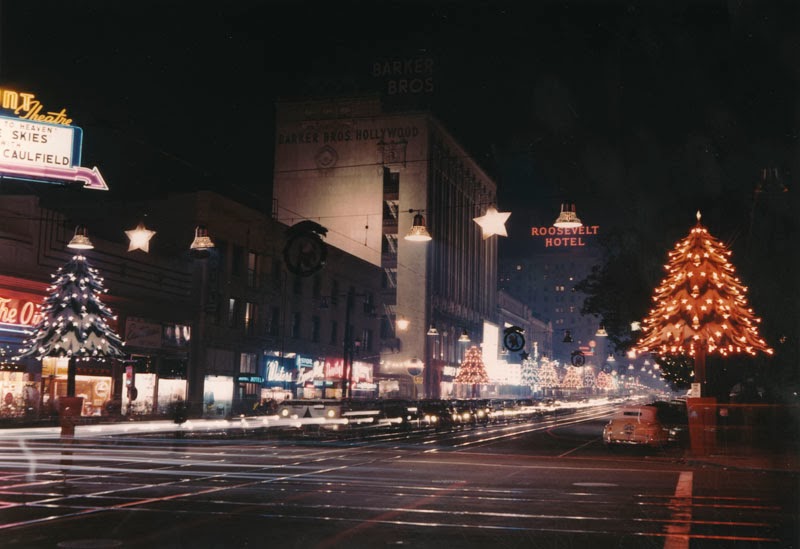

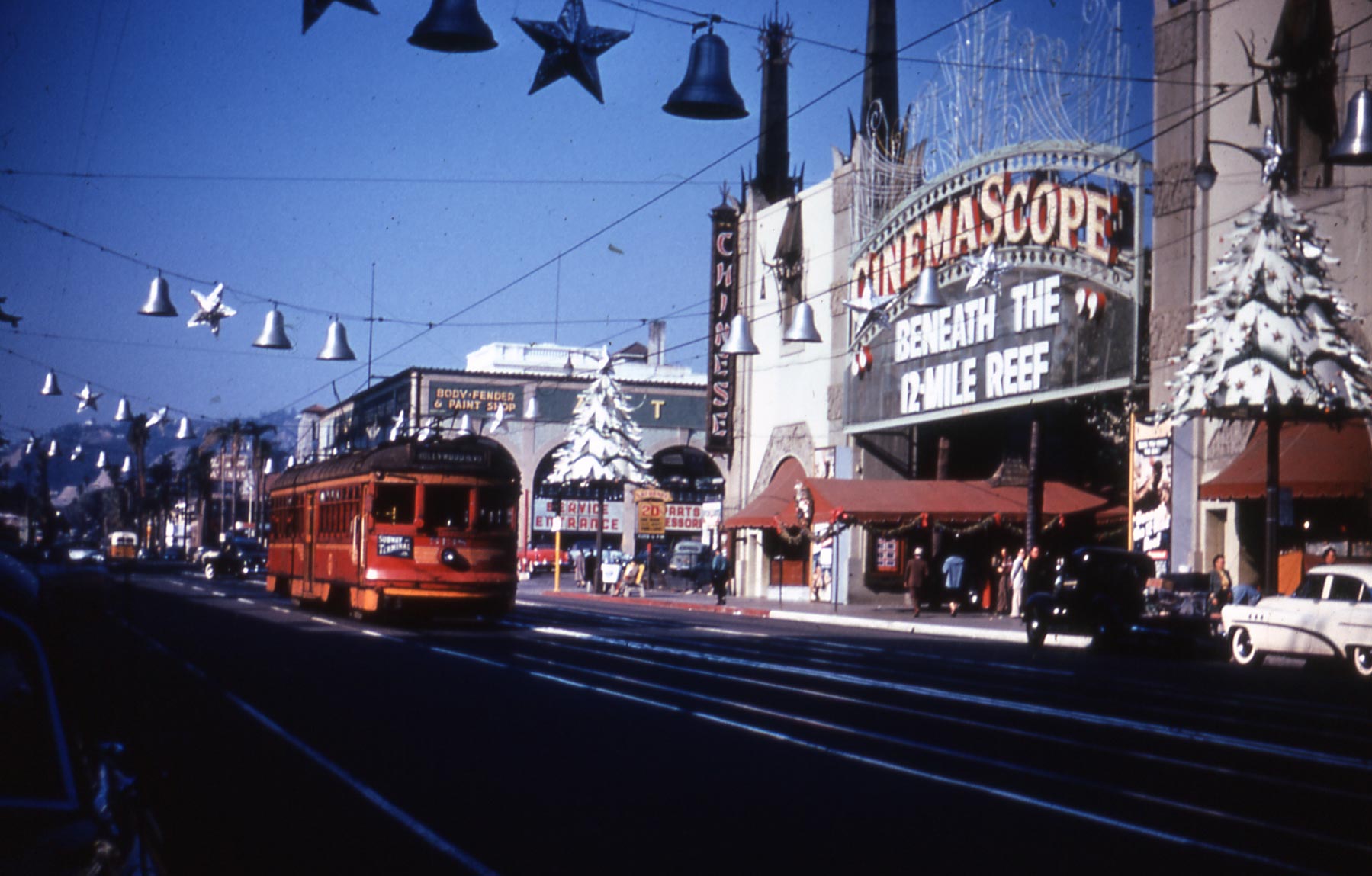
But where am I going with all this? Like City of Hollywood many cities throughout the country decorated their Main Streets from top to bottom with Christmas décor. During the time before malls spread out in the suburbs, downtown business banded together and contributed to the downtown businesses association which helped the city purchase these large decorations. During the 1940s and into the 1950s city trollies still trundled down the streets and the overhead cable wire holding the trolley wires were ideal for hanging Christmas decorations from. A private contractor would hand the décor, all while dodging the passing street cars below. If the street car companies were ever paid for use of their overhead span wires, this has been lost to history. Everything from large skyline garlands that spanned the street to wreaths, candles and candy canes on lamp posts. Cities of the post-World War Two era went all out to decorate as it was a way to not only lift people’s spirits but also put them into that holiday mood. It also to attracted shoppers to downtown business.
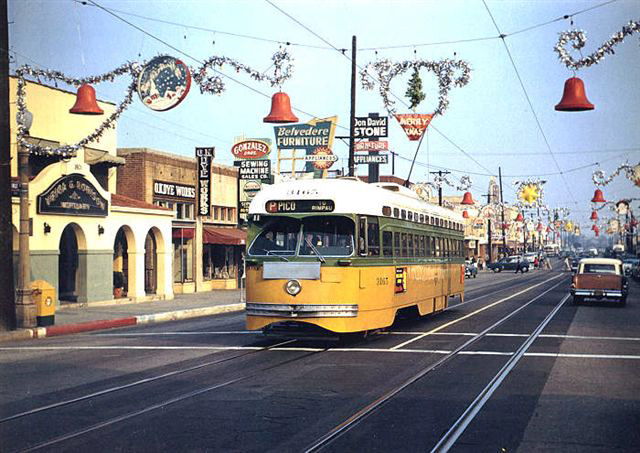
We look back on this time with nostalgia. During each holiday season we still sing about, city sidewalks dressed in holiday style in the air there is a feeling of Christmas, but unfortunately most cities have cut budgets and scaled back their holiday décor. What remains of the old decorations ends up deteriorating in a city back lot or hauled off to the dump. Many cities have gone through an urban renewal project where most of the lamps and poles that the large décor hung on were taken down and replaced with new smaller decorative lamp posts and large decorations don’t come cheap. The green movement to LED and not attaching to one holiday has left the city streets with simple white snowflakes or banner flags. The Christmas’s of your childhood are slowly being lost but not all hope is gone. There are people across the country saving what is called Municipal Christmas Decorations. There is even an entire Facebook page dedicated to municipal Christmas décor.
I grew up in Southern California and was just 20 miles from Hollywood Blvd. and just down the street from my house hung five large scrolled garland skylines across the street. Unfortunately, I have no photos of them but can remember them fondly. I guess that’s where the spark was lit. I loved seeing them each year and still in the mid-1990s most cities were still hanging their décor from the 1970s.
Recently a good friend of mine reached out to me with photos of local decorations from the surrounding towns. Allen is another enthusiast of all things vintage including Christmas decorations. My curiosity was sparked to see if the local town of Fruitland, ID still had some of their giant candy canes that he photographed in 2011. Allen wasn’t sure if any still were around as 2011 was the last year he had seen them. Since 2011, the town has seen a total redo of downtown. Urban renewal came in and took out the telephone poles and redid the main street. I reached out to the city which in turn put me in touch with the guy in charge of the Parks Department. He was quite friendly, as are most small-town folks in Idaho and said that the city sold all the candy canes to people in the city to enjoy but would look around in the back lot to see if anything remained. A day later he called back and said there was a neighbor of his who had two of them sitting behind his barn and didn’t want them anymore. He said that the neighbor was willing to sell both of the for $25! I immediately said SOLD!
Allen and I drove out first chance we got to pick up our treasure. Since there were two candy canes and he was the one who shared the photo of them with me it was only fair to let him have one of the two. The man from city met us at the farm where the candy canes were and led us around back behind the barn, and there before us laid two 10ft. fiberglass candy canes! We knew they were big but never imagined they were that big. We got them loaded into the truck and strapped them down and proceeded on our way home to start the restoration.
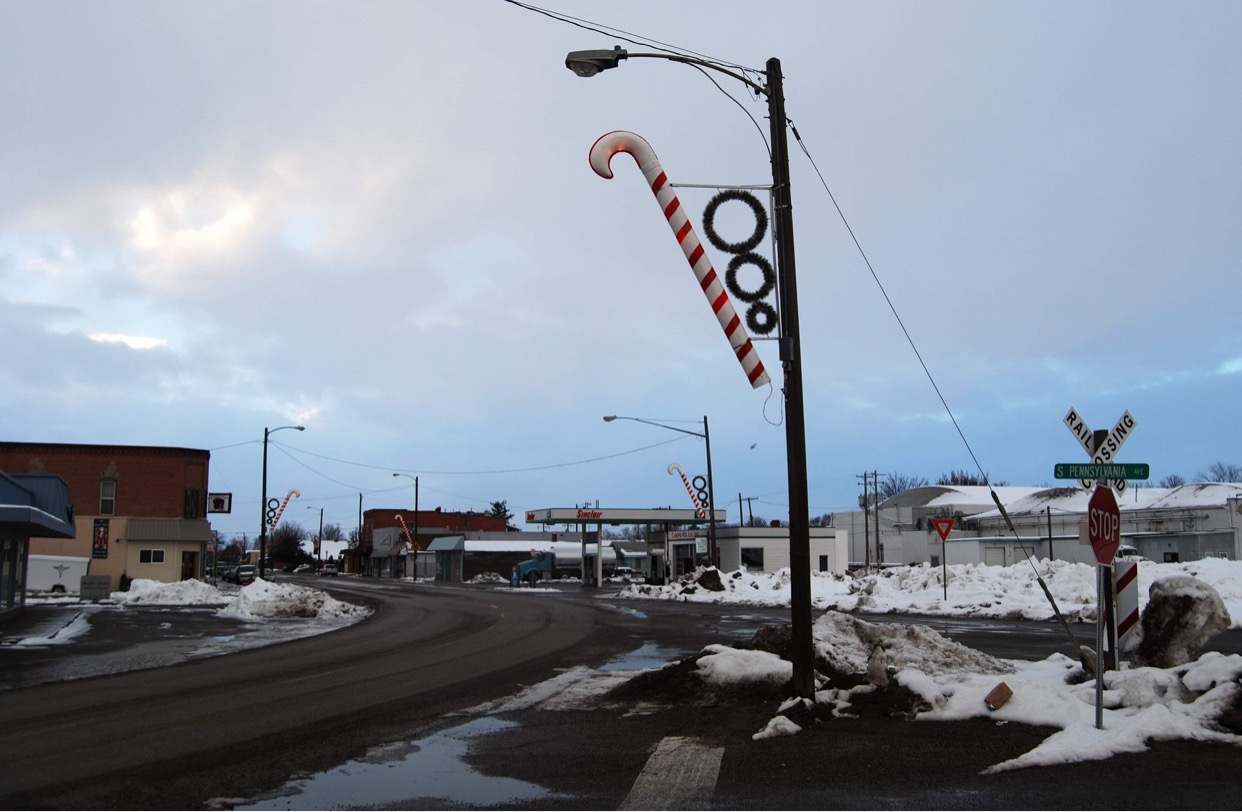

On the way home we decided to take a now photo of the same area Allen stood back in 2011 to capture the décor up on the telephone poles. Of course, nothing is the same today but in the current photo you can see the candy canes in the back of the truck. Once we got them back to my family’s shop, we plugged in the candy canes to see if they worked, they did minus a few burned out bulbs. They sure didn’t glow like they used to due to all the paint covering them. I learned that they were made out of fiberglass and the city with the help of some townsfolk had painted them to make them look new again. Inside the candy cane were a set of ten incandescent light bulbs on a rail that could be pulled out to replace the bulbs.
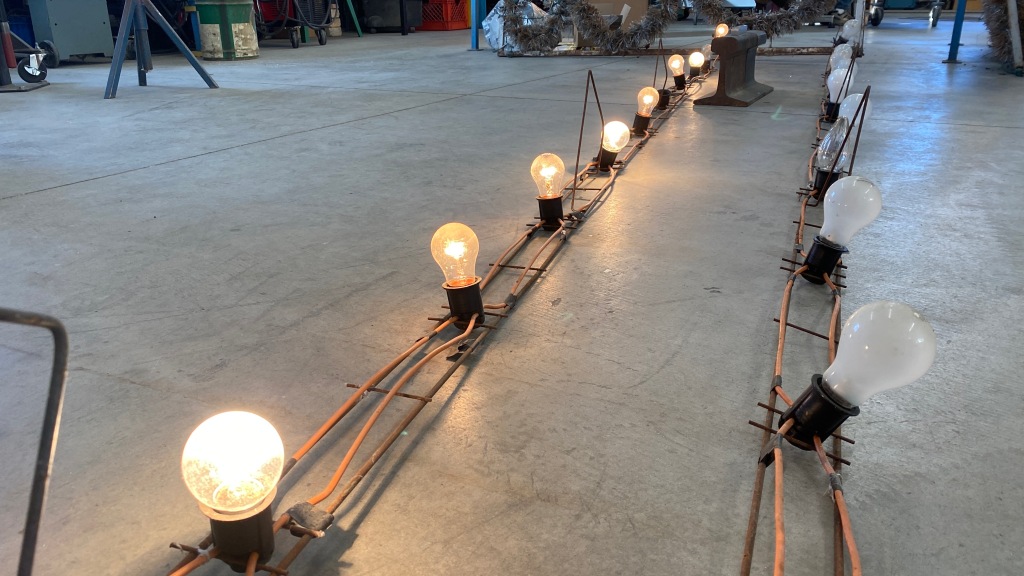
We were able to separate the candy canes from the metal brackets and remove all the decomposing garland from the brackets. The city also wrapped little Christmas lights on the garland which was also shot. With everything in pieces, the next step was to not only paint strip and candy canes but we decided to have both metal brackets blasted and powder coated silver so that they would last a lifetime.
While the brackets were at the blaster, I moved forward with upgrading the lights with LED bright white, 40W clear bulbs and add a new 3ft. lead power cord with a female connector in line. We both liked the idea of having lights on the garland area of the brackets but instead of wrapping Christmas lights on it I went with making my own C7 light set. I purchased white lamp cord wire and C7 sockets along with transparent green bulbs. Each of the three circles on the brackets would be wrapped with new green garland and outlined with the C7 bulbs.
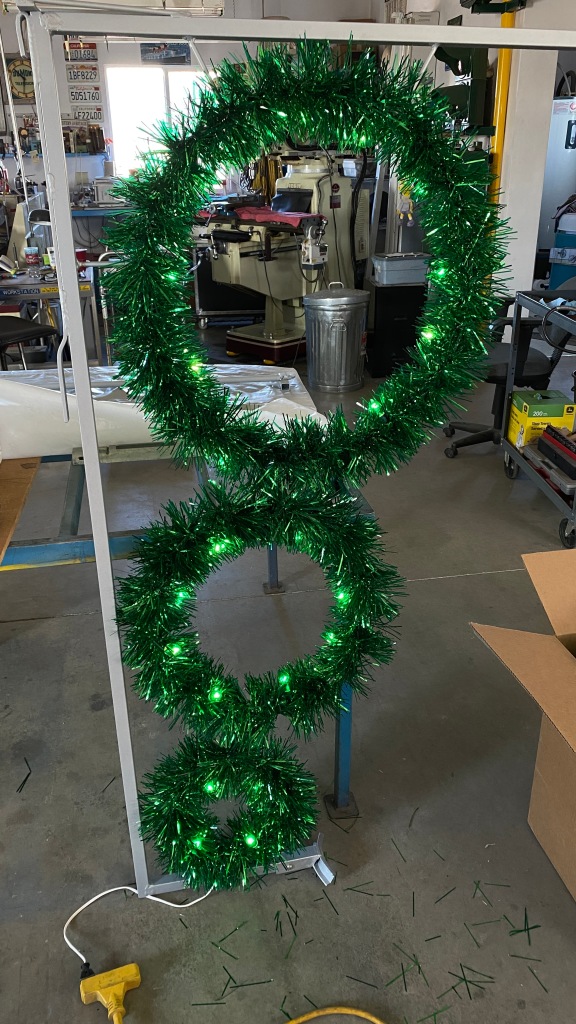


As for paint stripping the candy canes, I had to find a stripper that would be safe for fiberglass and ended up going with a water-based solution, it was enough to make the paint crinkle and with the help of a power washer the paint blew right off. What I revealed underneath was that originally the candy cane had a fiberglass red ribbon molded onto the cane part and to outline the hook was red sparkles molded under the lip of the hook. Over the years the fiberglass faded leading to the city painting the candy canes. With all the paint removed I found new 4” ribbon from a place called Golden Openings that supplies ribbon for all kinds of events and outdoor décor. Using 3M spray adhesive to apply the new ribbon I spooled the ribbon on while my father turned the candy cane.
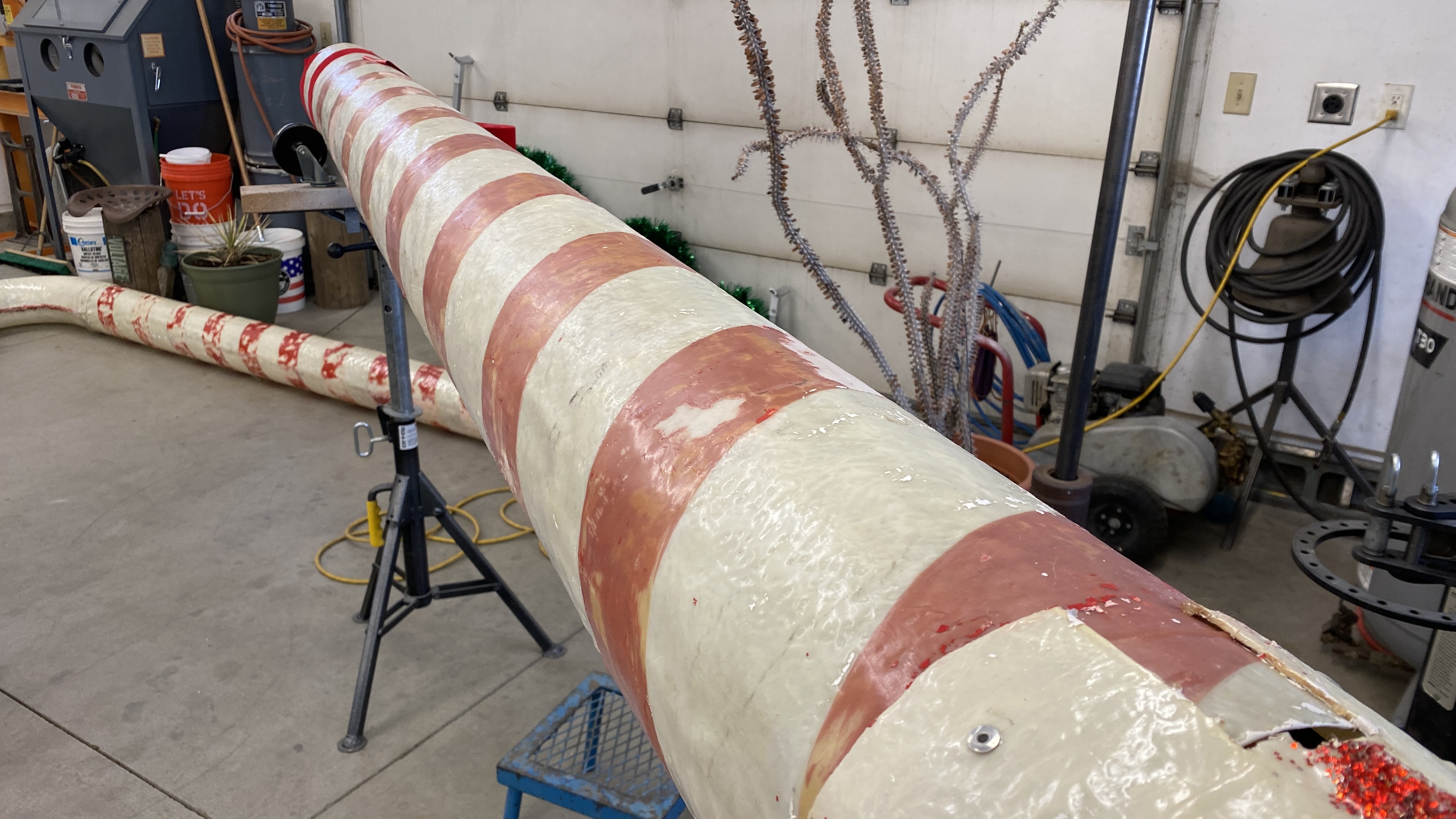
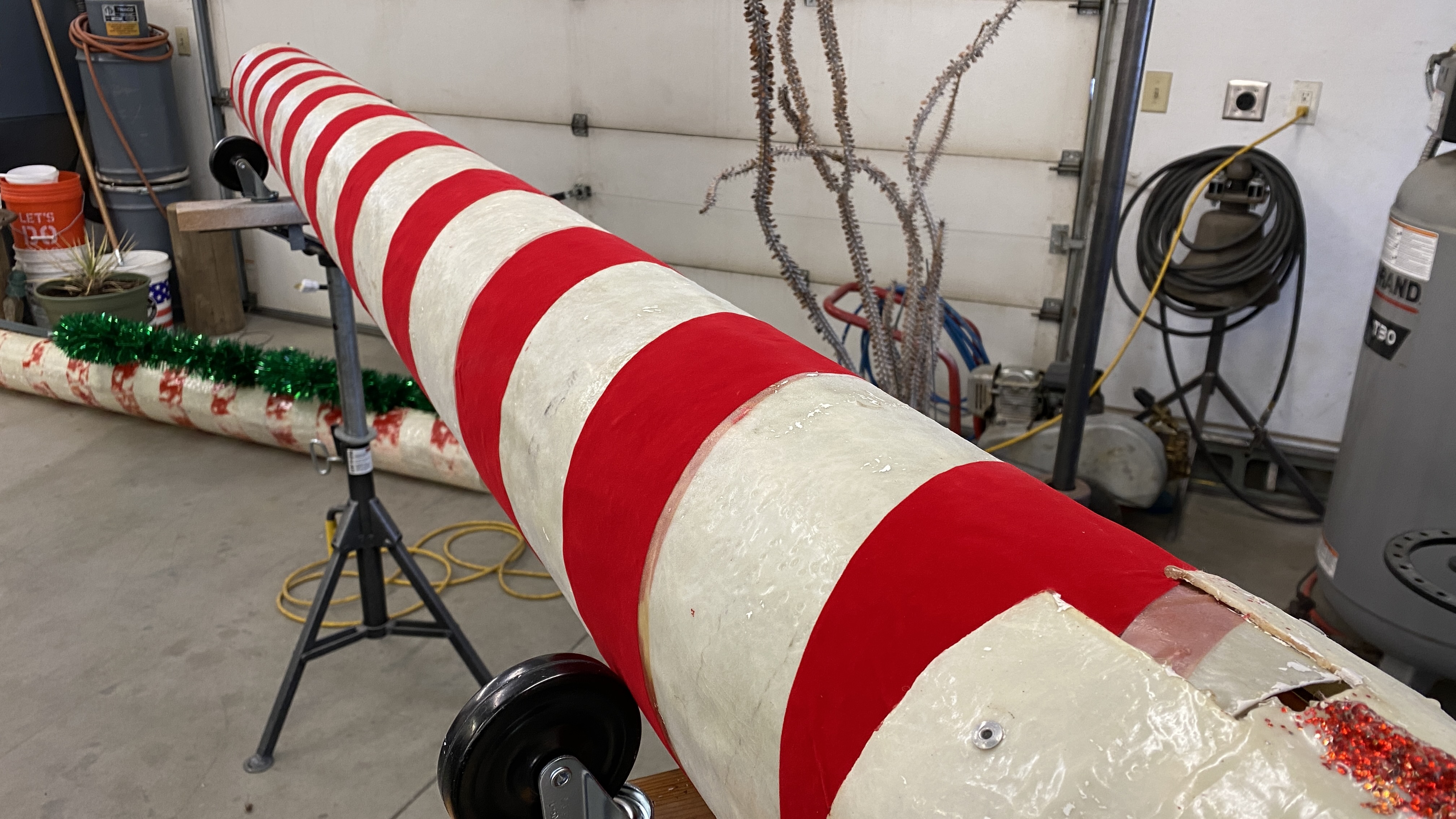
With the brackets clean and powder coated the lights and garland were applied and the last step was to attach the candy canes back to the brackets bringing back to life a decoration that was created by Display Specialties in Chicago. The company I found out went out of business in the mid ’70’s dating these to at least the late 1960s to early 1970s.

Through some research there are not many of these candy canes still around today. I have found similar candy canes used in cities in the Midwest during the 1940s but not exact ones. Only one other town in Idaho located 50 miles from where I live still uses these same exact candy canes. The only difference in the décor is the bracket was changed and instead of three circles there is decorative scroll in the center with garland on it. With help from Temple Displays, a company that still carries on the tradition of making municipal Christmas décor I was able to acquire new garland and mounting brackets for the candy canes. Allen and I display these proudly each Christmas for all to enjoy and hopefully spark a little bit of nostalgic Christmas spirit in people passing by.
I would like to thank,
Allen my friend in sharing his photos with me
Temple Displays, now called Holiday Outdoor Décor for continuing to produce the garland and other items to keep these old decorations going.
Golden Openings for the ribbon, a company right here in the USA.
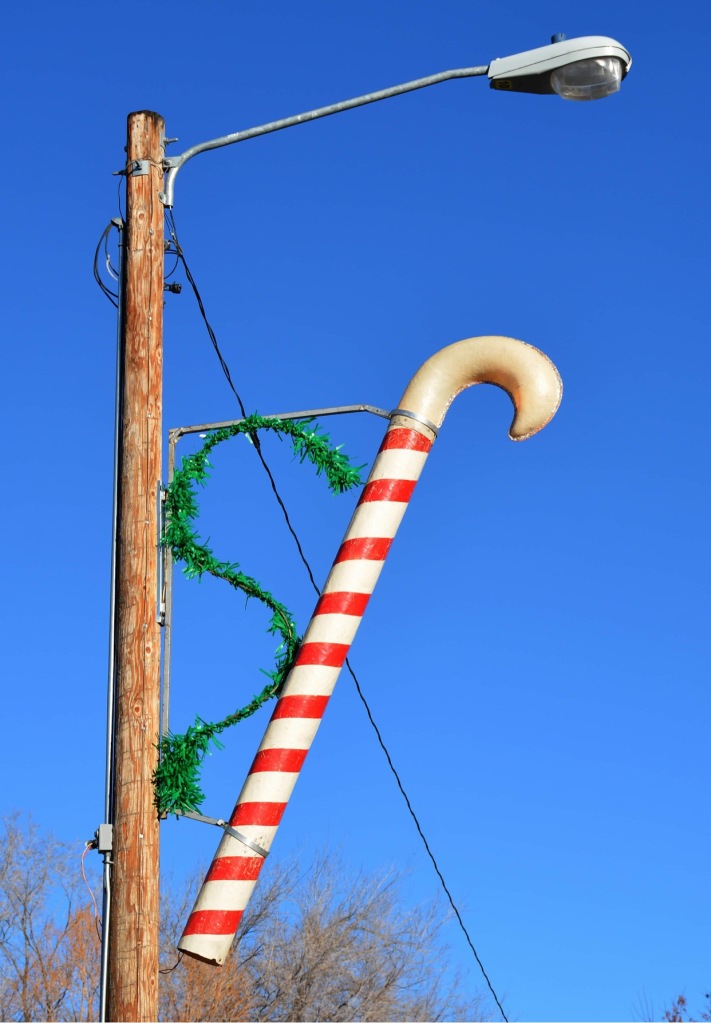

Oh my gosh, this is a fabulous post! You should see if perhaps the Idaho Statesman or Idaho Press Tribune would publish this. I love the care you took with your two recovered candy canes. Your knowledge and skill are commendable and these should be seen by a lot more folks!
LikeLiked by 1 person